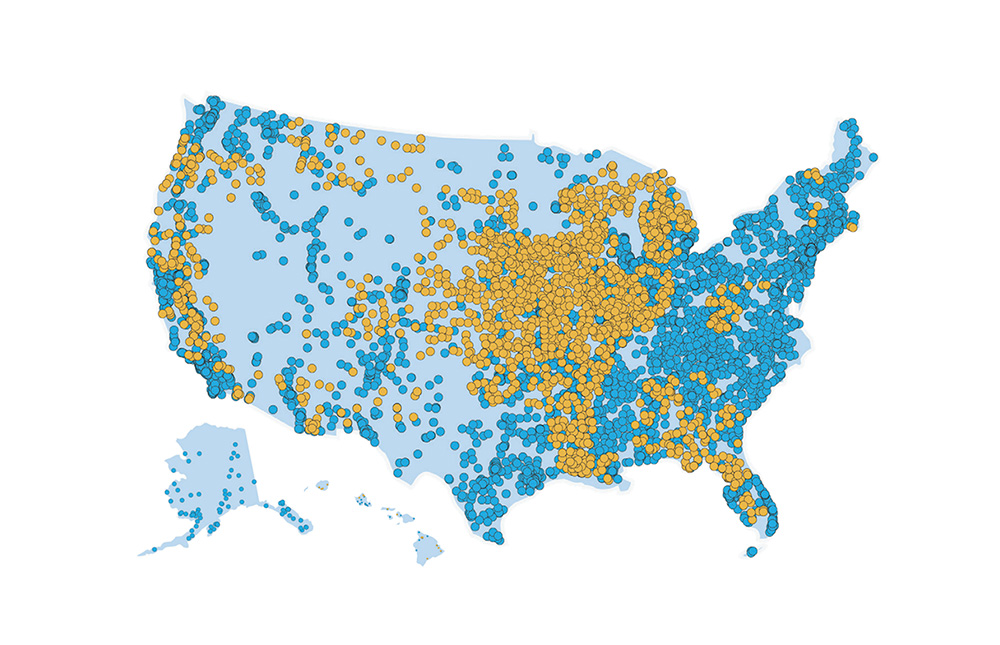Hydroxychloroquine Use During Pregnancy
This is Issue 45 in the On Point Series.
In recent weeks, hydroxychloroquine (HCQ) has received significant media attention because of initial reports that suggest that it could be an effective treatment for the highly infectious respiratory disease, COVID-19, caused by the novel coronavirus, SARS-CoV-2. As of April 20, 2020, the results of these small studies await corroboration and confirmation from larger, more comprehensive clinical trials.
Nonetheless, questions have already been raised about its possible use during pregnancy in this time of pandemic. Is HCQ safe for pregnant women? Is it safe for the unborn babies in their wombs? In this brief paper, I will review the scientific evidence that demonstrates that HCQ is safe for both expectant and lactating mothers.
Hydroxychloroquine Use
Hydroxychloroquine belongs to a group of related agents developed during World War II to combat malaria (Ben-Zvi et al. 2012). It has also been extensively used to treat a diverse range of autoimmune diseases including systemic lupus erythematosus (SLE) and rheumatoid arthritis (RA) (Costedoat-Chalumeau et al. 2014; Bermas et al. 2018; Ponticelli and Moroni 2017; Rempenault et al. 2018). The drug’s specific mechanism of action in individual diseases is not clear and numerous possible explanations have been proposed for its immunomodulatory effects (Ben-Zvi et al. 2012; Schrezenmeier and Dörner 2020).
HCQ is also effective against bacterial and viral infections. In combination with doxycycline, it remains the treatment of choice for chronic Q-fever endocarditis linked to Coxiella burnetti infection (Raoult et al. 1999). When it is combined with hydroxyurea and didanosine, it can reduce viral replication in HIV patients with low viral load (Paton and Aboulhab 2005).
Recently, the results of two small clinical studies from France and China have suggested that HCQ may be an effective treatment for COVID-19 (Gautret et al. 2020; Z. Chen et al. 2020). However, another small study from China showed no effect (J. Chen et al. 2020). The positive clinical studies are supported by earlier laboratory work that had suggested that a closely related drug called chloroquine (CQ) could limit the replication and spread of the two novel human coronaviruses, SARS-CoV-1 and SARS-CoV-2 (Zhou, Dai, and Tong 2020; Devaux et al. 2020; Vincent et al. 2005; Keyaerts et al. 2004, 2009; Gao, Tian, and Yang 2020; Wang et al. 2020).
Nonetheless, based on these preliminary findings, the official COVID-19 treatment guidelines published by China, South Korea, and Belgium included HCQ as a frontline drug whose administration to COVID-19 patients is justified by compassionate use.
On March 28, 2020, the U.S. Food and Drug Administration issued an Emergency Use Authorization (EUA) to allow HCQ and CQ donated to the U.S. Strategic National Stockpile to be distributed and used for certain hospitalized patients with COVID-19.
HCQ is currently being tested in the global SOLIDARITY clinical trial sponsored by the World Health Organization to determine if it slows disease progression or improves survival (Kupferschmidt and Cohen 2020).
Hydroxychloroquine Safety
HCQ has been the drug of choice for systemic lupus erythematosus (SLE) and rheumatoid arthritis (RA) for many decades. It has an excellent safety profile even in patients who have taken the drug for many years to control disease (Ponticelli and Moroni 2017). Nevertheless, it remains a prescription drug that should only be administered under medical supervision.
The most common adverse effects, especially for long-term use over five years, include retinopathy, which leads to damage of the retina and therefore to loss of sight, and cardiotoxicity, which leads to damage of the heart and potentially lethal cardiac arrhythmias (Abbasi et al. 2012; Yusuf et al. 2017; Tönnesmann, Kandolf, and Lewalter 2013; Sumpter et al. 2012).
The risk for these effects remains small: HCQ-induced retinopathy is a concern for only 0.3% of patients on standard dosage, while HCQ-induced cardiomyopathy is rare (Tönnesmann, Kandolf, and Lewalter 2013). Nonetheless, HCQ is not indicated for patients who have pre-existing retinopathy or other retinal diseases; conduction block or other arrhythmias; and/or severe liver or kidney disease.
Hydroxychloroquine Use During Pregnancy
When taken daily at doses of 400mg or less, HCQ is not associated with increased risk of adverse perinatal outcomes (Birru Talabi and Clowse 2020; Costedoat-Chalumeau et al. 2005).
In one study, 133 consecutive pregnancies in 90 women treated with 200mg of HCQ either twice daily (122 pregnancies) or once daily (11 pregnancies) were compared with 70 consecutive pregnancies in 53 women with similar disorders who did not receive HCQ (Costedoat-Chalumeau et al. 2003). The outcomes of pregnancy were not statistically different between groups. No visual, hearing, growth, or developmental abnormalities were reported in any of the children at the last follow-up.
In another study, a comparison of 114 HCQ-exposed pregnancies (98.2% in the first trimester) with 455 non-HCQ pregnancies revealed that the difference in the rate of congenital anomalies was not statistically significant (Diav-Citrin et al. 2013). Notably, the gestational delivery was earlier, the rate of preterm delivery was higher and the birth rate was lower among HCQ pregnancies, though it is not clear if these outcomes were related more to maternal disease rather than to HCQ use.
HCQ is also safe to use while breastfeeding (Birru Talabi and Clowse 2020). Among 13 infants of mothers with SLE who were breastfed, all had normal development and visual function (Motta et al. 2005). A review of 251 infants exposed to HCQ during pregnancy showed that their visual acuity did not differ from the control group (Osadchy, Ratnapalan, and Koren 2011).
Conclusion
The consensus opinion among different professional medical organizations including the American College of Rheumatology (Sammaritano et al. 2020), EULAR (Andreoli et al. 2017), the American College of Obstetricians and Gynecologists (“ACOG Committee Opinion No. 776: Immune Modulating Therapies in Pregnancy and Lactation” 2019), and the British Society of Rheumatology (Flint et al. 2016), is that HCQ use during pregnancy and lactation is low-risk.
********
Notice: Information presented here is for educational purposes only. No material in this paper is intended to substitute for professional medical advice, diagnosis, or treatment. Always seek the advice of your physician or other qualified health care provider with any questions you may have regarding a medical condition or treatment, or before undertaking a new health care regimen. Information is subject to change or updating – never disregard professional medical advice or delay in seeking it because of something you have read in this document or linked to it.
********
Rev. Nicanor Pier Giorgio Austriaco, O.P., Ph.D., S.T.D is Professor of Biology and of Theology at Providence College in Providence, Rhode Island, and an associate scholar at the Charlotte Lozier Institute.
References
Abbasi, Siddique, Laura Tarter, Ramin Farzaneh-Far, and Afshin Farzaneh-Far. 2012. “Hydroxychloroquine: A Treatable Cause of Cardiomyopathy.” Journal of the American College of Cardiology 60 (8): 786. https://doi.org/10.1016/j.jacc.2011.12.060.
“ACOG Committee Opinion No. 776: Immune Modulating Therapies in Pregnancy and Lactation.” 2019. Obstetrics and Gynecology 133 (4): e287–95. https://doi.org/10.1097/AOG.0000000000003176.
Andreoli, L., G. K. Bertsias, N. Agmon-Levin, S. Brown, R. Cervera, N. Costedoat-Chalumeau, A. Doria, et al. 2017. “EULAR Recommendations for Women’s Health and the Management of Family Planning, Assisted Reproduction, Pregnancy and Menopause in Patients with Systemic Lupus Erythematosus and/or Antiphospholipid Syndrome.” Annals of the Rheumatic Diseases 76 (3): 476–85. https://doi.org/10.1136/annrheumdis-2016-209770.
Ben-Zvi, Ilan, Shaye Kivity, Pnina Langevitz, and Yehuda Shoenfeld. 2012. “Hydroxychloroquine: From Malaria to Autoimmunity.” Clinical Reviews in Allergy and Immunology. Nature Publishing Group. https://doi.org/10.1007/s12016-010-8243-x.
Bermas, B. L., S. C. Kim, K. Huybrechts, H. Mogun, S. Hernandez-Diaz, B. T. Bateman, and R. J. Desai. 2018. “Trends in Use of Hydroxychloroquine during Pregnancy in Systemic Lupus Erythematosus Patients from 2001 to 2015.” Lupus 27 (6): 1012–17. https://doi.org/10.1177/0961203317749046.
Birru Talabi, Mehret, and Megan E. B. Clowse. 2020. “Antirheumatic Medications in Pregnancy and Breastfeeding.” Current Opinion in Rheumatology 32 (3): 238–46. https://doi.org/10.1097/BOR.0000000000000710.
Chen, Jun, Danpoing Liu, Li Liu, Ping Liu, Qingnian Xu, Lu Xia, Yun Ling, et al. 2020. “A Pilot Study of Hydroxychloroquine in Treatment of Patients with Common Coronavirus Disease-19 (COVID-19).” Journal of ZheJiang University 49 (1): 0–0.
Chen, Zhaowei, Jijia Hu, Zongwei Zhang, Shan Jiang, Shoumeng Han, Dandan Yan, Ruhong Zhuang, Ben Hu, and Zhan Zhang. 2020. “Efficacy of Hydroxychloroquine in Patients with COVID-19: Results of a Randomized Clinical Trial.” MedRxiv. [PREPRINT] https://doi.org/10.1101/2020.03.22.20040758.
Costedoat-Chalumeau, Nathalie, Zahir Amoura, Pierre Duhaut, Du Le Thi Huong, Djamel Sebbough, Bertrand Wechsler, Danièle Vauthier, Isabelle Denjoy, Jean Marc Lupoglazoff, and Jean Charles Piette. 2003. “Safety of Hydroxychloroquine in Pregnant Patients With Connective Tissue Diseases: A Study of One Hundred Thirty-Three Cases Compared With a Control Group.” Arthritis and Rheumatism 48 (11): 3207–11. https://doi.org/10.1002/art.11304.
Costedoat-Chalumeau, Nathalie, Zahir Amoura, Du Le Thi Huong, Philippe Lechat, and Jean-Charles Piette. 2005. “Safety of Hydroxychloroquine in Pregnant Patients with Connective Tissue Diseases. Review of the Literature.” Autoimmunity Reviews 4 (2): 111–15. https://doi.org/10.1016/j.autrev.2004.11.009.
Costedoat-Chalumeau, Nathalie, Bertrand Dunogué, Nathalie Morel, Véronique Le Guern, and Gaëlle Guettrot-Imbert. 2014. “Hydroxychloroquine: A Multifaceted Treatment in Lupus.” Presse Medicale. Elsevier Masson SAS. https://doi.org/10.1016/j.lpm.2014.03.007.
Devaux, Christian A., Jean-Marc Rolain, Philippe Colson, and Didier Raoult. 2020. “New Insights on the Antiviral Effects of Chloroquine against Coronavirus: What to Expect for COVID-19?” International Journal of Antimicrobial Agents, March, 105938. https://doi.org/10.1016/j.ijantimicag.2020.105938.
Diav-Citrin, Orna, Shani Blyakhman, Svetlana Shechtman, and Asher Ornoy. 2013. “Pregnancy Outcome Following in Utero Exposure to Hydroxychloroquine: A Prospective Comparative Observational Study.” Reproductive Toxicology 39 (August): 58–62. https://doi.org/10.1016/j.reprotox.2013.04.005.
Flint, Julia, Sonia Panchal, Alice Hurrell, Maud van de Venne, Mary Gayed, Karen Schreiber, Subha Arthanari, et al. 2016. “BSR and BHPR Guideline on Prescribing Drugs in Pregnancy and Breastfeeding-Part I: Standard and Biologic Disease Modifying Anti-Rheumatic Drugs and Corticosteroids.” Rheumatology (United Kingdom) 55 (9): 1693–97. https://doi.org/10.1093/rheumatology/kev404.
Gao, Jianjun, Zhenxue Tian, and Xu Yang. 2020. “Breakthrough: Chloroquine Phosphate Has Shown Apparent Efficacy in Treatment of COVID-19 Associated Pneumonia in Clinical Studies.” BioScience Trends 14 (1): 72–73. https://doi.org/10.5582/bst.2020.01047.
Gautret, Philippe, Jean-Christophe Lagier, Philippe Parola, Van Thuan Hoang, Line Meddeb, Morgane Mailhe, Barbara Doudier, et al. 2020. “Hydroxychloroquine and Azithromycin as a Treatment of COVID-19: Results of an Open-Label Non-Randomized Clinical Trial.” International Journal of Antimicrobial Agents, March, 105949. https://doi.org/10.1016/j.ijantimicag.2020.105949.
Keyaerts, Els, Sandra Li, Leen Vijgen, Evelien Rysman, Jannick Verbeeck, Marc Van Ranst, and Piet Maes. 2009. “Antiviral Activity of Chloroquine against Human Coronavirus OC43 Infection in Newborn Mice.” Antimicrobial Agents and Chemotherapy 53 (8): 3416–21. https://doi.org/10.1128/AAC.01509-08.
Keyaerts, Els, Leen Vijgen, Piet Maes, Johan Neyts, and Marc Van Ranst. 2004. “In Vitro Inhibition of Severe Acute Respiratory Syndrome Coronavirus by Chloroquine.” Biochemical and Biophysical Research Communications 323 (1): 264–68. https://doi.org/10.1016/j.bbrc.2004.08.085.
Kupferschmidt, Kai, and Jon Cohen. 2020. “WHO Launches Global Megatrial of the Four Most Promising Coronavirus Treatments.” Science, March 22, 2020. Available at https://www.sciencemag.org/news/2020/03/who-launches-global-megatrial-four-most-promising-coronavirus-treatments. doi:10.1126/science.abb8497.
Motta, Mario, Angela Tincani, David Faden, Enrica Zinzini, Andrea Lojacono, Alessandra Marchesi, Micol Frassi, Chiara Biasini, Sonia Zatti, and Gaetano Chirico. 2005. “Follow-up of Infants Exposed to Hydroxychloroquine given to Mothers during Pregnancy and Lactation.” Journal of Perinatology : Official Journal of the California Perinatal Association 25 (2): 86–89. https://doi.org/10.1038/sj.jp.7211208.
Osadchy, Alla, Thirukumaran Ratnapalan, and Gideon Koren. 2011. “Ocular Toxicity in Children Exposed in Utero to Antimalarial Drugs: Review of the Literature.” The Journal of Rheumatology 38 (12): 2504–8. https://doi.org/10.3899/jrheum.110686.
Paton, N I, and J Aboulhab. 2005. “Hydroxychloroquine, Hydroxyurea and Didanosine as Initial Therapy for HIV-Infected Patients with Low Viral Load: Safety, Efficacy and Resistance Profile after 144 Weeks.” HIV Medicine 6 (1): 13–20. https://doi.org/10.1111/j.1468-1293.2005.00259.x.
Ponticelli, C, and G Moroni. 2017. “Hydroxychloroquine in Systemic Lupus Erythematosus (SLE).” Expert Opinion on Drug Safety 16 (3): 411–19. https://doi.org/10.1080/14740338.2017.1269168.
Raoult, Didier, Pierre Houpikian, Hervé Tissot Dupont, Jean Marc Riss, J. Arditi-Djiane, and Philippe Brouqui. 1999. “Treatment of Q Fever Endocarditis: Comparison of 2 Regimens Containing Doxycycline and Ofloxacin or Hydroxychloroquine.” Archives of Internal Medicine 159 (2): 167–73. https://doi.org/10.1001/archinte.159.2.167.
Rempenault, Claire, Bernard Combe, Thomas Barnetche, Cécile Gaujoux-Viala, Cédric Lukas, Jacques Morel, and Charlotte Hua. 2018. “Metabolic and Cardiovascular Benefits of Hydroxychloroquine in Patients with Rheumatoid Arthritis: A Systematic Review and Meta-Analysis.” Annals of the Rheumatic Diseases 77 (1): 98–103. https://doi.org/10.1136/annrheumdis-2017-211836.
Sammaritano, Lisa R, Bonnie L Bermas, Eliza E Chakravarty, Christina Chambers, Megan E B Clowse, Michael D Lockshin, Wendy Marder, et al. 2020. “2020 American College of Rheumatology Guideline for the Management of Reproductive Health in Rheumatic and Musculoskeletal Diseases.” Arthritis & Rheumatology (Hoboken, N.J.) 72 (4): 529–56. https://doi.org/10.1002/art.41191.
Schrezenmeier, Eva, and Thomas Dörner. 2020. “Mechanisms of Action of Hydroxychloroquine and Chloroquine: Implications for Rheumatology.” Nature Reviews. Rheumatology 16 (3): 155–66. https://doi.org/10.1038/s41584-020-0372-x.
Sumpter, M D, L S Tatro, W V Stoecker, and R K Rader. 2012. “Evidence for Risk of Cardiomyopathy with Hydroxychloroquine.” Lupus 21 (14): 1594–96. https://doi.org/10.1177/0961203312462757.
Tönnesmann, Ernst, Reinhard Kandolf, and Thorsten Lewalter. 2013. “Chloroquine Cardiomyopathy – a Review of the Literature.” Immunopharmacology and Immunotoxicology 35 (3): 434–42. https://doi.org/10.3109/08923973.2013.780078.
Vincent, Martin J., Eric Bergeron, Suzanne Benjannet, Bobbie R. Erickson, Pierre E. Rollin, Thomas G. Ksiazek, Nabil G. Seidah, and Stuart T. Nichol. 2005. “Chloroquine Is a Potent Inhibitor of SARS Coronavirus Infection and Spread.” Virology Journal 2 (August). https://doi.org/10.1186/1743-422X-2-69.
Wang, Manli, Ruiyuan Cao, Leike Zhang, Xinglou Yang, Jia Liu, Mingyue Xu, Zhengli Shi, Zhihong Hu, Wu Zhong, and Gengfu Xiao. 2020. “Remdesivir and Chloroquine Effectively Inhibit the Recently Emerged Novel Coronavirus (2019-NCoV) in Vitro.” Cell Research. Springer Nature. https://doi.org/10.1038/s41422-020-0282-0.
Yusuf, I. H., S. Sharma, R. Luqmani, and S. M. Downes. 2017. “Hydroxychloroquine Retinopathy.” Eye (London, England) 31 (6): 828–45. https://doi.org/10.1038/eye.2016.298.
Zhou, Dan, Sheng-Ming Dai, and Qiang Tong. 2020. “COVID-19: A Recommendation to Examine the Effect of Hydroxychloroquine in Preventing Infection and Progression.” The Journal of Antimicrobial Chemotherapy, no. February: 4–7. https://doi.org/10.1093/jac/dkaa114.






















